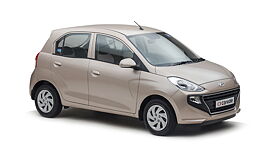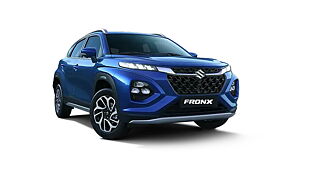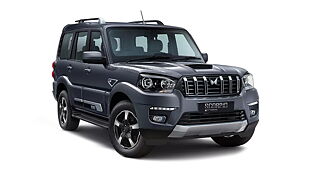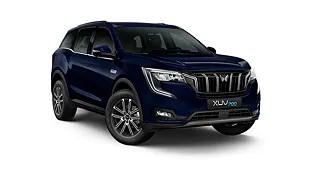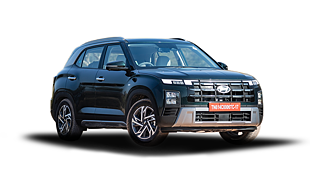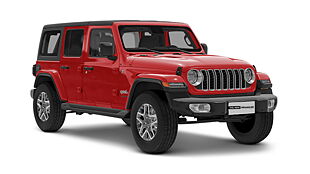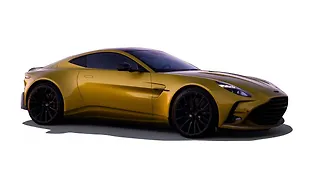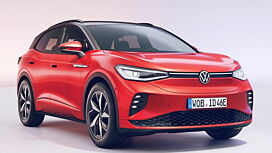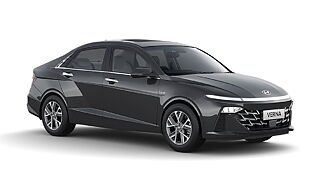Introduction

Comparison tests cannot get any more relevant than this. Over 50 per cent of new car buyers in India opt for hatchbacks, out of which a good chunk of sales come from the ever-competitive B1 hatch segment which includes the likes of Tata Tiago and Maruti Suzuki Celerio. Now the Tiago has fared surprisingly well in all our previous head-to-heads (you can read about it here), emerging as the winner against the Celerio petrol and the Kwid. Having said that, its real test is about to get underway now that we have the all-new Hyundai Santro in the picture, and if there’s a car to bring down the Tiago it was always going to be this entry-level Hyundai.
For all its appeal and well-established roots, the new Santro actually has a lot to prove. With small cars, and in particular medium-sized hatchbacks, they ought to offer a certain level of comfort, efficiency and refinement. Bonus points if they look and feel premium, and the little Hyundai delivers on most fronts, but is it any better than the Tiago? Well, that’s what we are here to find out, armed with a stack of testing data to help.

Exterior design

First things first, the Tiago is a better looking car and there’s no two ways about it. The Santro, on the other hand, is a busy amalgamation of sharp-edged design bits at the front, a tallboy profile and a flat rear-end with dated taillights. In fact, the much older Tiago looks smart and well-balanced. The front looks bold with the signature Tata smiling mesh grille with hexagonal elements, and the sweptback headlamps that are large but not overtly so. All in all, it’s a simple design that is classy without being overstated and it would take a faithful Santro fan to insist this new iteration is better looking of the two.

Cabin comfort

The stark contrast in the design and layout of the finer elements continue as you step inside the cabin. Whereas the Santro uses a straightforward albeit slightly dull layout for the dash, the Tiago is mature yet stylish, not to mention distinctive with the way the centre console is laid. The cabin however, is a mish-mash of cheaply finished plastics – the door handles feel chunky and the graining on the top of the dash looks great but lower down its all hard plastics and ill-fitting materials, especially below the steering column and around the foot well. All in all, the gloss black plastics, lots of chrome inserts and that hexagonal-shaped centre console makes the Tiago’s interior look, wait for it, quite sporty. That said, there are still rough edges and Tata needs to work on the fit and finish if it ought to beat the little Hyundai for quality.

Unsurprisingly, the Santro simply offers nicer trim and textures and a top-notch touchscreen system that instantly relegates the Tiago’s pixelated display to the 90s. The touchscreen system, in fact, is one of the few highlights of this cabin and comes with Apple CarPlay and Android Auto. The UI, again, isn’t funky or vibrant but impressive nonetheless if you fancy simple layouts, that is. Screen aside, the level of perceived quality inside the Santro is significantly better than that of the Tiago – the Hyundai’s mundane looking switchgear and dual tone upholstery are of higher quality. The Tiago, however, fights back with better ergonomics. The steering column is adjustable and there is height adjustment for the driver’s seat as well – both of which are unavailable on the Santro. The latter’s driving position, in fact, is far from ideal for a tall driver since the steering is set too low and the seating is quite high. Thankfully, the outward visibility is simply superb with a huge glass area and relatively thin C-pillars. In comparison, the Tiago is nowhere as easy to look out of because of its high set dashboard and substantial front and rear pillars.
Upfront, the difference in seating comfort isn’t much. Both the Santro and the Tiago have adequately sized front seats with a squab big enough for most occupants. The only difference here can be found in the foot well – the Santro has a great deal of knee room thanks to the slim dash whereas the Tiago struggles with a narrower foot well. The seats in the Hyundai also offer slightly better lateral support thanks to the marginally longer and wider backrest.

The Santro, then, gets that crucial lead on its rival upfront and continues to impress as you move on to the rear. Being a tallboy, it keeps its roofline almost flat all the way till the hatch to create more headroom. The rear bench is perched high for good visibility and to allow tall occupants to stretch their legs further down the floor. What’s more, the backrest is set at a comfortable angle and there is no shortage of legroom or headroom, either. Besides a comfortable rear seat, the Santro also scores well when it comes to that all-important airy feeling, thanks to the bright upholstery and a much larger glasshouse. All things considered, it’s safe to say that the Santro’s rear seat sets new benchmarks for comfort and space in this segment. The Tiago’s rear seat is more contoured than the Hyundai, offering better thigh support but that’s about it. It cannot match the Santro for headroom nor legroom and because the backrest angle is set a little far back, it is difficult to find the ideal seating position over long journeys. Combined with the all-black upholstery, the smaller glass area and legroom deficit leaves the Tiago’s cabin looking dark and somewhat claustrophobic.

Cheap thrills?

It’s a hit-and-miss affair with both these hatchbacks when it comes to equipment. That said, the Tiago comes with more kit as standard, including alloy wheels, height adjustable driver’s seat, tilt adjustment for the steering, a comprehensive multi-information display between the dials, a dead pedal and four rear parking sensors. However, it misses out on a touchscreen display for the infotainment system which is a big drawback. The Santro, on the other hand, has the best touchscreen infotainment system for a small hatch, one with smartphone mirroring tech and a rear-view camera. Disappointingly, it gets steel wheels, no dead pedal nor steering adjustment. The window switch panel is also centrally mounted, behind the gear lever and requires some getting used to. When it comes to safety, the top-spec trim of both these cars come with dual airbags and ABS as standard.

On the road

With 84bhp and 114Nm, the Tiago’s 1199cc motor offers strong outputs considering its displacement, however, the powertrain is hampered by the 1020kg kerb weight and it shows when we look at performance numbers. More on that later.
This all-aluminium motor has three cylinders and despite its unbalanced nature, is devoid of vibrations for the most part. Sure, it sounds industrial and slightly grainy at high revs but when you are driving around town at a normal pace, the motor is peppy and flexible from the word go – it pulls well from low revs and spins in a linear way all the way to its redline. By contrast, the Santro’s 1086cc, four-cylinder motor makes 69bhp and 99Nm. Now these figures may not seem substantial on paper but bear in mind, the Santro is light for its size. At 920kg as tested, it is over 100 kilos lighter than the Tiago and with the engine paired to a slick-shifting 5-speed manual and a light clutch, they make for a stress-free drivetrain combination. Speaking of stress-free, the Santro’s engine has a surprisingly strong bottom-end, pulling the car from standstill with pleasant vigour. There is always enough torque to keep up with traffic and the engine remains quiet as long as you don’t breach the 4,000rpm mark. The strong bottom-end pull and decent mid-range punch allow you to stay in higher gears, which means you end up shifting a lot less than in the Tiago. In terms of gearshift quality, again it’s the Santro’s mechanism that’s simply faultless – the shifts are as precise as they can get and the clutch pedal is light and well weighted, too. The Tiago’s 5-speeder isn’t bad either, lending a good feel when rowing through the gears, however, the clutch pedal is springy and comparatively heavier.

The Santro’s user-friendly powertrain is aided by a steering that’s fairly light to use. Although there is some feel to it, the steering is sloppy at low speeds and the rack itself is very slow to initiate quick turn-ins. In comparison, the Tiago’s steering is quicker and a lot more fluid when you apply some lock. In outright steering feel terms, the Tata is still the one – it isn’t quite as light as the Hyundai’s, but direct and smooth nonetheless.

Both the Santro and the Tiago are perfect for playing traffic wars and they are not bad on bad roads either. At low speeds, it’s the new boy that has the upper hand, with a ride that is certainly more absorbent than that of the Tiago, with a nice, soft edge over rippled surfaces. More importantly, the suspension remains quiet, isolating occupants by rounding off sharp inputs. On the contrary, you can hear the suspension working in the Tiago as it goes over sharp-edged bumps. Some vibrations also creep in through the steering column and the pedals, which isn’t a surprise given that the Tiago is stiffly sprung. All in all, the Tiago is firm at low speeds though it’s never uncomfortable.
The comparatively stiffer setup pays dividends as you venture out of town. On the highways, it’s the Tiago that remains far more composed over long undulations or humps. This may come as a surprise for some but the Tiago is also a lot more refined at speed. The Santro, on the other hand, gets a little skittish at triple digit speeds – the rear end is fidgety even over slightest of bumps and overall, never feels settled.

Let’s talk numbers

The combination of light kerb weight and strong motor has worked wonders for the Santro. In fact, the little Hyundai posted some impressive times in our acceleration and in-gear tests. It took 15.43 seconds to hit 100kmph from standstill and completed the 20-80kmph and 40-100kmph in-gear runs in just 14.84 and 21.78 seconds respectively. Naturally, the heavier Tiago fell short of the Santro when tested against the clock, hitting 0-100kmph in 16.32 seconds. It was over couple of seconds slower in-gear as well.
Fuel efficiency

As for fuel efficiency, which is a major consideration for small car buyers, it’s the Tiago that’s more efficient of the two. Its city efficiency of 13.10kmpl is noticeably better than the Santro which managed 12.70kmpl. On the highway, the Santro returned 16.80kmpl whereas the Tiago delivered 17.50kmpl.
Verdict
2nd
Tata Tiago XZ
Final score: 360/600

A deserving champ in our previous shootouts, the Tata Tiago blends a fine level of style, comfort and equipment in its segment. For an entry-level hatch, it looks and feels rather mature, more importantly it’s got that big-car feel – something that’s difficult to accomplish in this segment. However, we also cannot ignore the fact that it’s a three year old product, one that could use a mid-life update, especially now with the Santro stealing the limelight. The stylish interior and a pliant high speed ride may offset the mediocre performance but it’s not enough to challenge the new Santro which plays the small car game considerably better.
1st
Hyundai Santro Asta
Final score: 367/600

For many buyers, choosing between the Tiago and the Santro is going to be difficult. The former is great to look at, more refined at speed and cheaper as well. Yet the Santro offers strong performance, a better put-together cabin, lighter controls and a plush low speed ride. More importantly, it feels like a quality product the more you dig into the finer details. Put simply, it wins this test because it offers a high quality cabin and an effortless powertrain – two biggest selling points in this segment.
Specifications
| CAR NAME | Tata Tiago |
Hyundai Santro | ||||||||||||||||||||||||||||||||||||||||||||||||||||||||||||||||||||||||||||||||||||||||||||||||||||||||||
| Variant | XZ Petrol Manual |
Test Data
Score Sheetफ़ीचर्ड कार्स
|

